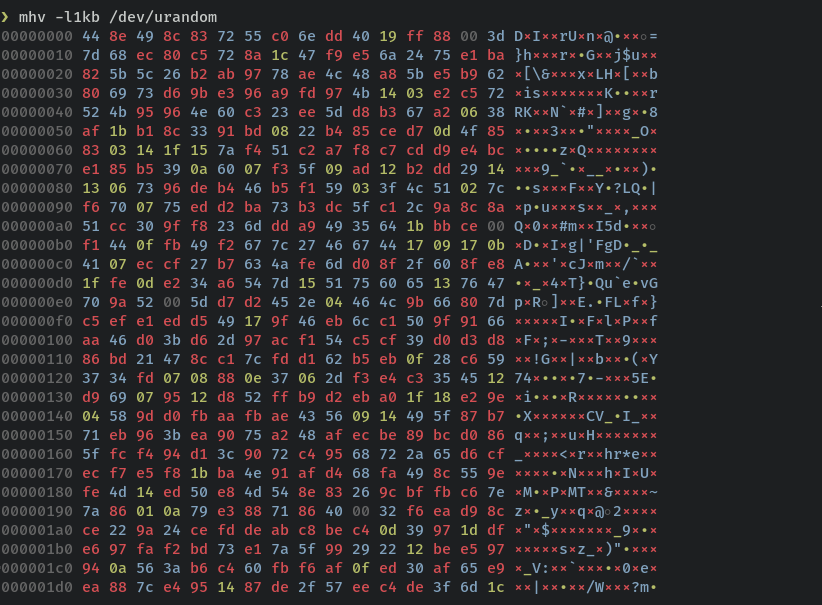# MHV






## How it works?
* **The color legend**
* ⬛ **Null byte**
* 🟦 **ASCII Printable Characters**
* 🟩 **Space Characters**
* 🟩 **Control Characters**
* 🟥 **ASCII Extended Codes**
* **Install**
```
$ cargo install mhv
```
## Usage
```
❯ mhv -h
A minimalist hex viewer
Usage: mhv [OPTIONS]
Arguments:
Target file
Options:
-s, --skip Skip `N` bytes of the input. The `N` argument can also
include an unit (see `--length` for details). [default: 0]
-l, --length Read `N` bytes from the input. None for full read. The `N`
argument can be a unit with a decimal prefix(kb, mb).
Examples: --length 3kb, -l3kb, --length 1mb...
N unis are kb(1000), K(1024), mb(1000 * 1000), M(1024 * 1024),
and a prefix 0x for hexadecimal, `0x0a`
-n, --no-squeezing Displays all input data. Otherwise any number of output
lines which would be identical to the last one are replaced
with a line comprised of a single asterisk
-h, --help Print help
-V, --version Print version
```
## Stream Workflow

## Usage examples
* **Read 5 bytes from start**

* **Read 32 bytes from start**

* **Skip 16 bytes and read 40**

* **Read using units kb(1000), K(1024), mb(1000 * 1000) or M(1024 * 1024)**

* **Read from offset 0x50 plus 16 bytes**

* **Read UTF16 file**





